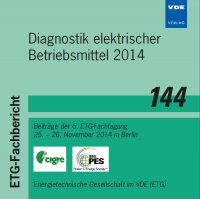Non-Conventional Test Methods During Dielectric and Partial Discharge Assessment of High Power Insulated Gate Bipolar Transistor Modules
Conference: Diagnostik elektrischer Betriebsmittel 2014 - Beiträge der 6. ETG-Fachtagung
11/25/2014 - 11/26/2014 at Berlin, Deutschland
Proceedings: Diagnostik elektrischer Betriebsmittel 2014
Pages: 6Language: englishTyp: PDF
Personal VDE Members are entitled to a 10% discount on this title
Authors:
Arumugam, Saravanakumar; Schoenemann, Thomas (University of Rostock, High Voltage and High Current Technologies, IEF/IEE, Tannenweg 22, 18059 Rostock, Germany)
Gorchakov, Sergey; Schoenemann, Thomas (Leibniz Institute for Plasma Science and Technology e.V., Felix-Hausdorf-Str. 2, 17489 Greifswald, Germany)
Abstract:
The present study investigates on non-conventional test methods employed during dielectric condition assessment of high power IGBT modules. This primarily involves dielectric response analysis of IGBT modules through time and frequency domain methods, partial discharge analysis through 3-phase amplitude relation diagram and quantification of their sensitivity and accuracy respectively. Five identically rated IGBT samples are selected and their PD level are obtained as described by the standards IEC 60270 and IEC 1287. The chosen samples are qualitatively ranked as per their PD level. Subsequently, the dielectric response of chosen IGBT samples are recorded over a wide frequency. The dielectric parameters such as loss factor, dielectric capacitance, etc., are computed and analyzed. Additionally, the amplitude frequency response of chosen IGBT samples are obtained through frequency response analysis method and the apparent dielectric capacitance of each sample is computed. Once this is accomplished, the dielectric and PD behaviour of the chosen IGBT sample are comprehensively analyzed and the sensitivity and accuracy of each test method is investigated. Summarizing all, it is believed that alternative test procedures might expand the operating bandwidth of the frequency span employed during dielectric response analysis. Such an approach provides an opportunity to improvise resource efficiency, enhances maintenance free test procedures and online/offline monitoring methods


